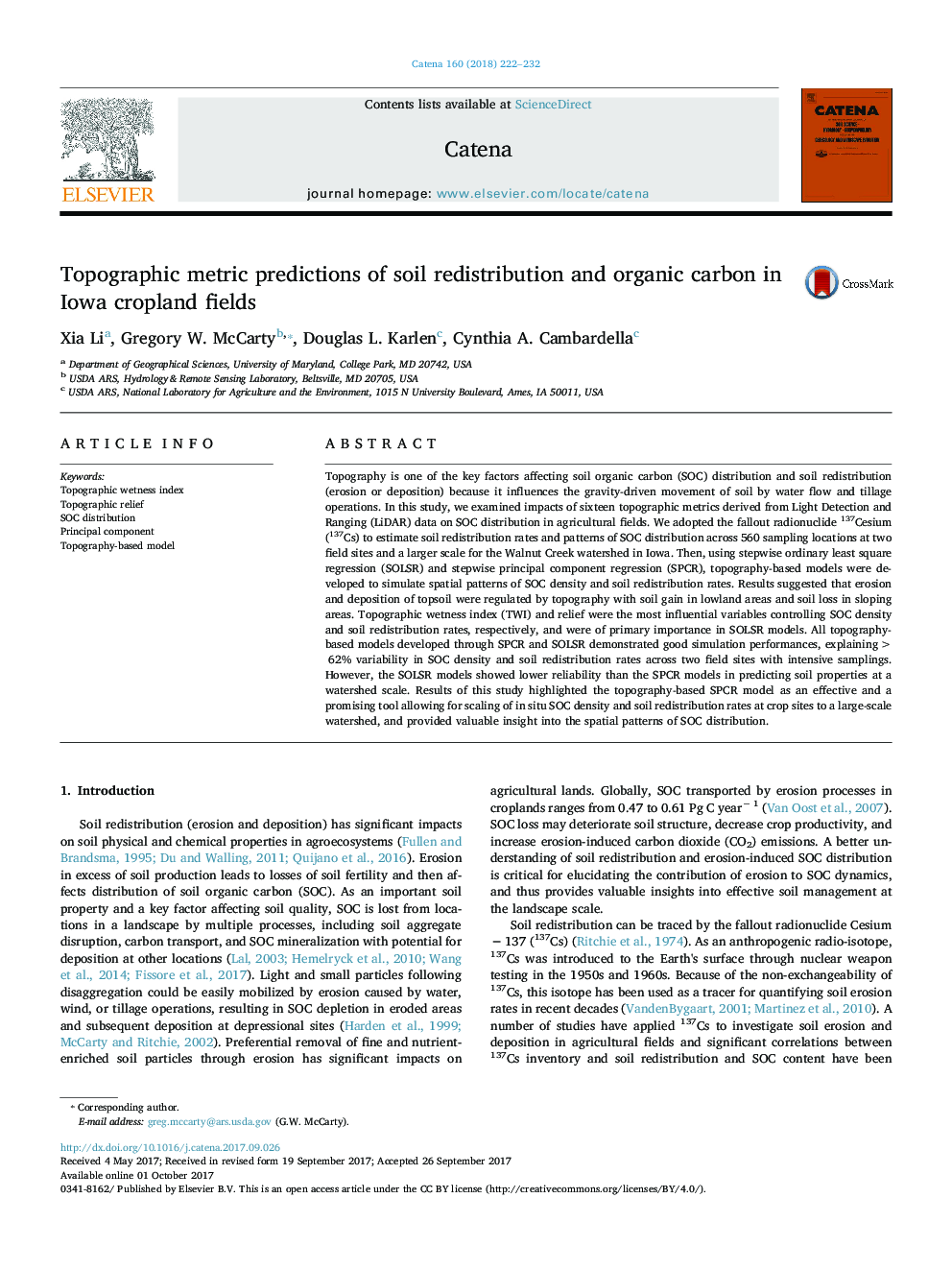| کد مقاله | کد نشریه | سال انتشار | مقاله انگلیسی | نسخه تمام متن |
|---|---|---|---|---|
| 5770042 | 1629194 | 2018 | 11 صفحه PDF | دانلود رایگان |
- Topographic wetness index was the most influential variable controlling SOC density.
- Relief was the most influential variable controlling soil redistribution.
- SPCR soil property models outperformed corresponding SOLSR models at watershed scale.
Topography is one of the key factors affecting soil organic carbon (SOC) distribution and soil redistribution (erosion or deposition) because it influences the gravity-driven movement of soil by water flow and tillage operations. In this study, we examined impacts of sixteen topographic metrics derived from Light Detection and Ranging (LiDAR) data on SOC distribution in agricultural fields. We adopted the fallout radionuclide 137Cesium (137Cs) to estimate soil redistribution rates and patterns of SOC distribution across 560 sampling locations at two field sites and a larger scale for the Walnut Creek watershed in Iowa. Then, using stepwise ordinary least square regression (SOLSR) and stepwise principal component regression (SPCR), topography-based models were developed to simulate spatial patterns of SOC density and soil redistribution rates. Results suggested that erosion and deposition of topsoil were regulated by topography with soil gain in lowland areas and soil loss in sloping areas. Topographic wetness index (TWI) and relief were the most influential variables controlling SOC density and soil redistribution rates, respectively, and were of primary importance in SOLSR models. All topography-based models developed through SPCR and SOLSR demonstrated good simulation performances, explaining >Â 62% variability in SOC density and soil redistribution rates across two field sites with intensive samplings. However, the SOLSR models showed lower reliability than the SPCR models in predicting soil properties at a watershed scale. Results of this study highlighted the topography-based SPCR model as an effective and a promising tool allowing for scaling of in situ SOC density and soil redistribution rates at crop sites to a large-scale watershed, and provided valuable insight into the spatial patterns of SOC distribution.
Journal: CATENA - Volume 160, January 2018, Pages 222-232
